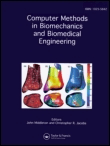
COMPUTER METHODS IN BIOMECHANICS AND BIOMEDICAL ENGINEERING
Scope & Guideline
Elevating Biomedical Engineering with Advanced Computational Research
Introduction
Aims and Scopes
- Computational Modeling and Simulation:
The journal emphasizes the development and utilization of computational models to simulate biological systems, including but not limited to fluid dynamics, tissue mechanics, and biomechanical interactions. This includes finite element analysis (FEA), computational fluid dynamics (CFD), and other numerical methods to predict responses of biological tissues and systems. - Biomechanical Analysis:
A core area of the journal is the biomechanical analysis of human motion and the mechanical properties of biological tissues. This involves investigating the forces and movements involved in various physical activities and medical conditions, utilizing both experimental and computational approaches. - Biomedical Engineering Applications:
The journal covers a wide range of applications in biomedical engineering, such as the design and analysis of medical devices, prosthetics, and implants. It explores the integration of engineering principles with biological and medical knowledge to improve patient outcomes. - Data-Driven Approaches and Machine Learning:
Emerging themes in the journal include the use of machine learning and data-driven methods to enhance predictive modeling in biomechanics and biomedical applications. This includes the classification of medical conditions based on biomechanical data and the optimization of treatment protocols. - Interdisciplinary Research:
The journal promotes interdisciplinary research that combines expertise from biomechanics, biomedical engineering, computer science, and health sciences. This collaborative approach aims to foster innovation and advance the field through diverse perspectives and methodologies.
Trending and Emerging
- Integration of AI and Machine Learning:
There is a significant increase in the application of artificial intelligence and machine learning techniques in biomechanical and biomedical research. This trend includes predictive modeling, data classification, and personalized medicine, indicating a move towards smarter, data-driven solutions. - Patient-Specific Modeling:
Emerging research focuses on patient-specific models that account for individual anatomical and physiological variations. This personalized approach enhances the accuracy of simulations and improves treatment outcomes, especially in surgical planning and prosthetic design. - Real-Time Monitoring and Wearable Technologies:
The growing interest in real-time monitoring using wearable technologies is evident. Research is increasingly exploring the integration of sensors and IoT devices to collect biomechanical data in real-time, facilitating better health monitoring and rehabilitation. - Biomechanical Applications in Rehabilitation:
There is a notable trend towards applying computational methods in rehabilitation settings, particularly in optimizing treatment protocols and evaluating patient progress. Studies are focusing on how biomechanics can inform rehabilitation strategies for various injuries and conditions. - Multiscale and Multiphysics Modeling:
Research is moving towards multiscale and multiphysics modeling approaches that capture the complexities of biological systems across different scales. This trend reflects a growing recognition of the interconnectedness of biological processes and the need for comprehensive modeling techniques.
Declining or Waning
- Traditional Experimental Methods:
There appears to be a waning interest in traditional experimental methods that do not incorporate computational or modeling techniques. As computational methods become more advanced and accessible, researchers are increasingly favoring simulations over purely experimental approaches. - Basic Biomechanical Studies:
Research focused solely on basic biomechanical studies without computational analysis is becoming less common. The trend is shifting towards more complex, integrated studies that utilize computational tools to analyze biomechanical phenomena. - Static Modeling Approaches:
There is a noticeable decline in static modeling approaches in favor of dynamic and real-time modeling techniques. Researchers are moving towards understanding the dynamic interactions within biological systems rather than static representations. - Overreliance on Single-Disciplinary Studies:
The trend shows a decrease in studies that focus solely on one discipline. Instead, interdisciplinary approaches that incorporate multiple fields such as engineering, medicine, and data science are gaining prominence.
Similar Journals

Journal of Biomimetics Biomaterials and Biomedical Engineering
Transforming Nature's Wisdom into Engineering MarvelsThe Journal of Biomimetics Biomaterials and Biomedical Engineering, published by TRANS TECH PUBLICATIONS LTD, stands at the forefront of interdisciplinary research that merges biology with engineering to address real-world challenges in healthcare and material science. Since its inception in 2014, the journal has contributed valuable insights into the development of innovative biomaterials and biomedical applications, showcasing research excellence in its fields, including biotechnology and bioengineering. With an ISSN of 2296-9837 and an E-ISSN of 2296-9845, this journal provides a platform for both emerging and established researchers to disseminate their work, fostering knowledge transfer across the global scientific community. Currently positioned in the Q4 quartile across categories such as Bioengineering, Biomedical Engineering, and Biotechnology, it aims to enhance its impact through open-access policies and rigorous peer-review processes. With its headquarters in Germany, the journal welcomes diverse contributions from around the world, shaping the future of biomimetic technologies and advancing our understanding of complex biomedical systems.

Advanced Biomedical Engineering
Pioneering breakthroughs in biomedical innovation.Advanced Biomedical Engineering is a peer-reviewed open access journal published by the Japanese Society for Medical & Biological Engineering, dedicated to disseminating high-quality research in the multidisciplinary fields of biomedical engineering. Boasting an ISSN of 2187-5219, this journal has been pivotal since its inception in 2018, especially as it embraces the open access model to foster knowledge sharing and wide accessibility. Centered in Tokyo, Japan, it serves as a vital platform for scholars and practitioners across various domains, such as biomaterials, biomedical engineering, and biotechnology. Despite currently residing in the Q4 quartile across several categories, including those in biotechnology and computer science applications, the journal is committed to elevating its academic impact and reputation, aiming for improved rankings in Scopus and other databases. Researchers and professionals are encouraged to contribute their innovative findings, discussions, and case studies, facilitating the advancement of this dynamic field.
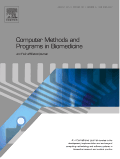
Computer Methods and Programs in Biomedicine
Unleashing the Power of Computing in Biomedical Discoveries.Computer Methods and Programs in Biomedicine, published by ELSEVIER IRELAND LTD, is a leading journal at the intersection of computer science and biomedical research. With an impressive impact factor evidenced by its Q1 rankings in multiple categories—Computer Science Applications, Health Informatics, and Software—this journal ranks highly among peer publications, showcasing its significance in advancing interdisciplinary research. Covering a wide array of topics since its inception in 1985, it is particularly crucial for those invested in the innovation of computational methods applied to the biomedical field. The journal has established a strong reputation, with Scopus rankings placing it in the top percentiles across its relevant sectors, including the 14th position out of 138 in Health Informatics. Researchers, practitioners, and students looking to explore current trends, methodologies, and advancements in biomedical applications of computer science will find this journal an invaluable resource.

PERIODICA POLYTECHNICA-MECHANICAL ENGINEERING
Connecting Scholars, Advancing EngineeringPERIODICA POLYTECHNICA-MECHANICAL ENGINEERING, published by the Budapest University of Technology and Economics, is a distinguished open access journal that has been committed to advancing the field of mechanical engineering since its inception in 1969. With an E-ISSN of 1587-379X, this journal makes a significant contribution to the dissemination of cutting-edge research, currently holding a Q3 ranking in the prestigious Scopus category for Mechanical Engineering. Offering a platform for researchers to share innovative findings and methodologies, PERIODICA POLYTECHNICA serves as a vital resource for professionals, scholars, and students looking to stay abreast of the latest developments in mechanical engineering. With an open access format established since 1999, it ensures high accessibility to valuable knowledge, enabling a global audience to engage with pioneering studies while enhancing collaboration and knowledge-sharing within the field.
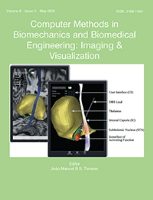
Computer Methods in Biomechanics and Biomedical Engineering-Imaging and Visualization
Advancing Imaging Techniques for Biomedical BreakthroughsComputer Methods in Biomechanics and Biomedical Engineering - Imaging and Visualization is a prominent academic journal published by Taylor & Francis Ltd, dedicated to the intersection of computational methods and biomedical engineering. With an ISSN of 2168-1163 and an E-ISSN of 2168-1171, the journal has become a crucial resource for researchers and professionals exploring innovative imaging and visualization techniques in healthcare. Covering a broad spectrum of topics, it aims to facilitate the advancement of knowledge in areas such as biomechanics, computational mechanics, and medical imaging. Holding a strong position in various Scopus rankings, including Q2 in Computational Mechanics, it offers valuable insights that foster interdisciplinary collaboration. Although it is not an open-access journal, researchers can access its rich repository of knowledge, which is instrumental in shaping future advancements in biomedical applications. The journal’s commitment to quality and relevance ensures that it remains an authoritative source for emerging trends and methodologies within the field, serving as a vital tool for academia and industry practitioners alike.
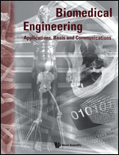
BIOMEDICAL ENGINEERING-APPLICATIONS BASIS COMMUNICATIONS
Unveiling the latest breakthroughs in biomedical engineering.BIOMEDICAL ENGINEERING-APPLICATIONS BASIS COMMUNICATIONS is a prominent journal dedicated to the dynamic field of biomedical engineering, published by WORLD SCIENTIFIC PUBL CO PTE LTD. Since its inception in 1992, the journal has provided a platform for the dissemination of high-quality research and innovative applications within the biomedical engineering domain. Despite its current Q4 ranking in multiple categories such as Bioengineering and Biomedical Engineering, the journal serves as an essential resource for researchers and professionals seeking to explore the latest developments and practical applications in this interdisciplinary field. The journal is based in Singapore, reflecting the region's growing influence in scientific research and technology. Although it does not offer open access, it continues to attract submissions that enrich the scientific dialogue within its community. With a commitment to fostering knowledge and research collaboration, this journal remains a vital contributor to the ongoing advancements in biomedical technology and engineering.
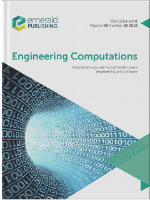
ENGINEERING COMPUTATIONS
Exploring the intersection of theory and application.ENGINEERING COMPUTATIONS is a prestigious journal dedicated to advancing the fields of computational theory, mathematics, computer science, and engineering. Published by EMERALD GROUP PUBLISHING LTD, this journal plays a crucial role in disseminating innovative research and practical applications that address contemporary challenges in technology and engineering. With a solid impact factor and recognition in prestigious quartiles—Q3 in Computational Theory and Mathematics and Q2 in Engineering—ENGINEERING COMPUTATIONS serves as a vital platform for researchers, professionals, and students seeking to contribute to and benefit from cutting-edge advancements. The journal’s expansive timeline, offering insights from 1984 to 2024, ensures a rich historical perspective on the evolution of computational methodologies. By fostering a collaborative environment for rigorous research, ENGINEERING COMPUTATIONS enriches the academic community and inspires the next generation of innovators.

Journal of Theoretical and Applied Mechanics
Unlocking Knowledge in Mechanics for AllJournal of Theoretical and Applied Mechanics, published by the Polish Society of Theoretical and Applied Mechanics, stands as a leading platform for disseminating cutting-edge research in the realms of theoretical and applied mechanics. With its ISSN 1429-2955 and E-ISSN 1429-2955, this Open Access journal has been fostering academic dialogue since 2006, making knowledge readily accessible to researchers and practitioners alike. Based in Warsaw, Poland, the journal encompasses a wide breadth of topics within mechanics, appealing to a diverse readership including researchers, professionals, and students. The journal's current Scopus ranking places it within the 30th percentile of the field, emphasizing its relevance and contribution to the discipline. As it converges from 2007 to 2024, the Journal of Theoretical and Applied Mechanics is pivotal for those seeking to advance understanding and innovation in mechanical engineering and mathematics, making it an essential resource for anyone involved in these critical areas of study.
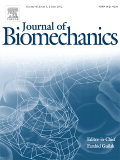
JOURNAL OF BIOMECHANICS
Charting New Frontiers in Biomechanical AnalysisJOURNAL OF BIOMECHANICS is a premier journal published by Elsevier Science Ltd, renowned for its impactful contributions to the field of biomechanical research since its inception in 1968. With an ISSN of 0021-9290 and an E-ISSN of 1873-2380, this journal serves as a vital resource for researchers, practitioners, and students invested in the interdisciplinary domains of Biomedical Engineering, Biophysics, Orthopedics, Sports Medicine, and Rehabilitation. The journal consistently ranks in the Q1 and Q2 quartiles across several categories, reflecting its dedication to high-quality and innovative research, as evidenced by its impressive Scopus rankings—particularly within Medicine Rehabilitation (Rank #23/161). Despite being a subscription-based journal, it offers crucial insights into mechanical analysis and applications that enhance our understanding of human movement and performance. With projections of coverage extending to 2024, the JOURNAL OF BIOMECHANICS remains an indispensable platform for disseminating cutting-edge research that drives advancements in health, performance, and injury rehabilitation.

Applied Bionics and Biomechanics
Pioneering Research at the Intersection of Life and MechanicsApplied Bionics and Biomechanics, published by HINDAWI LTD, is a leading open-access journal dedicated to the interdisciplinary integration of biological and engineering principles, particularly within the realms of bioengineering, biomedical engineering, and biotechnology. With an ISSN of 1176-2322 and E-ISSN of 1754-2103, the journal operates out of the United Kingdom since its inception in 2003, providing a vital platform for the dissemination of innovative research and practical applications that enhance our understanding of biomechanical systems. Although the journal's coverage was discontinued in Scopus after 2023, it remains a valuable resource for researchers, professionals, and students, highlighted by its Q3 ranking across multiple categories, underlining its respectable position within the academic community. The journal encourages open sharing of ideas, fostering collaboration among diverse scientific fields, with the objective of addressing complex challenges in the interface of biology and engineering.